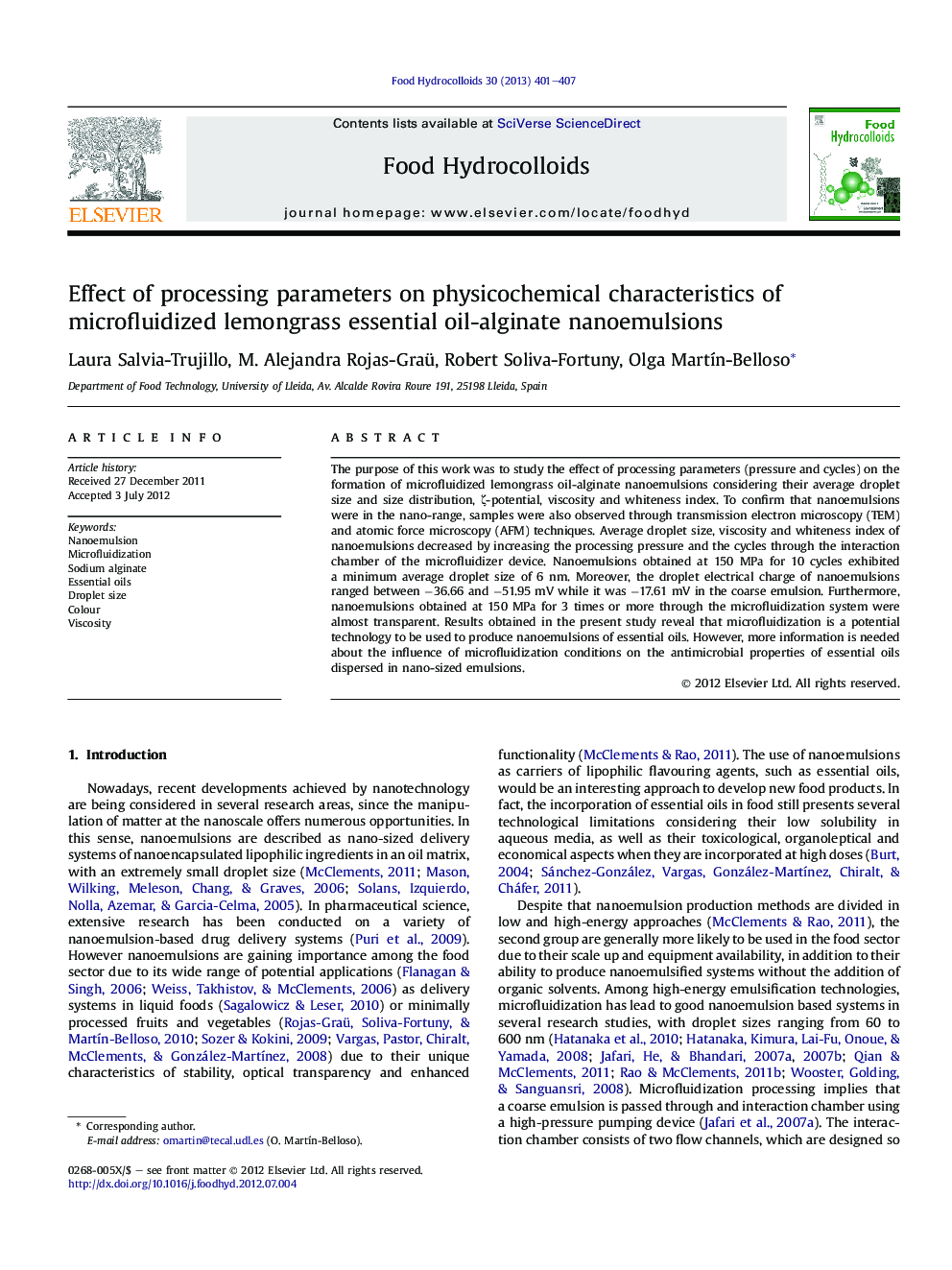| Article ID | Journal | Published Year | Pages | File Type |
|---|---|---|---|---|
| 604765 | Food Hydrocolloids | 2013 | 7 Pages |
The purpose of this work was to study the effect of processing parameters (pressure and cycles) on the formation of microfluidized lemongrass oil-alginate nanoemulsions considering their average droplet size and size distribution, ζ-potential, viscosity and whiteness index. To confirm that nanoemulsions were in the nano-range, samples were also observed through transmission electron microscopy (TEM) and atomic force microscopy (AFM) techniques. Average droplet size, viscosity and whiteness index of nanoemulsions decreased by increasing the processing pressure and the cycles through the interaction chamber of the microfluidizer device. Nanoemulsions obtained at 150 MPa for 10 cycles exhibited a minimum average droplet size of 6 nm. Moreover, the droplet electrical charge of nanoemulsions ranged between −36.66 and −51.95 mV while it was −17.61 mV in the coarse emulsion. Furthermore, nanoemulsions obtained at 150 MPa for 3 times or more through the microfluidization system were almost transparent. Results obtained in the present study reveal that microfluidization is a potential technology to be used to produce nanoemulsions of essential oils. However, more information is needed about the influence of microfluidization conditions on the antimicrobial properties of essential oils dispersed in nano-sized emulsions.
Graphical abstractFigure optionsDownload full-size imageDownload as PowerPoint slideHighlights► Lemongrass oil-alginate nanoemulsions were obtained through microfluidization. ► The effect of microfluidization processing parameters on physical properties of nanoemulsions was evaluated. ► Nanoemulsions with a minimum average droplet size of 6 nm were obtained. ► Nanoemulsions presented optical transparency, low viscosity and high stability.
